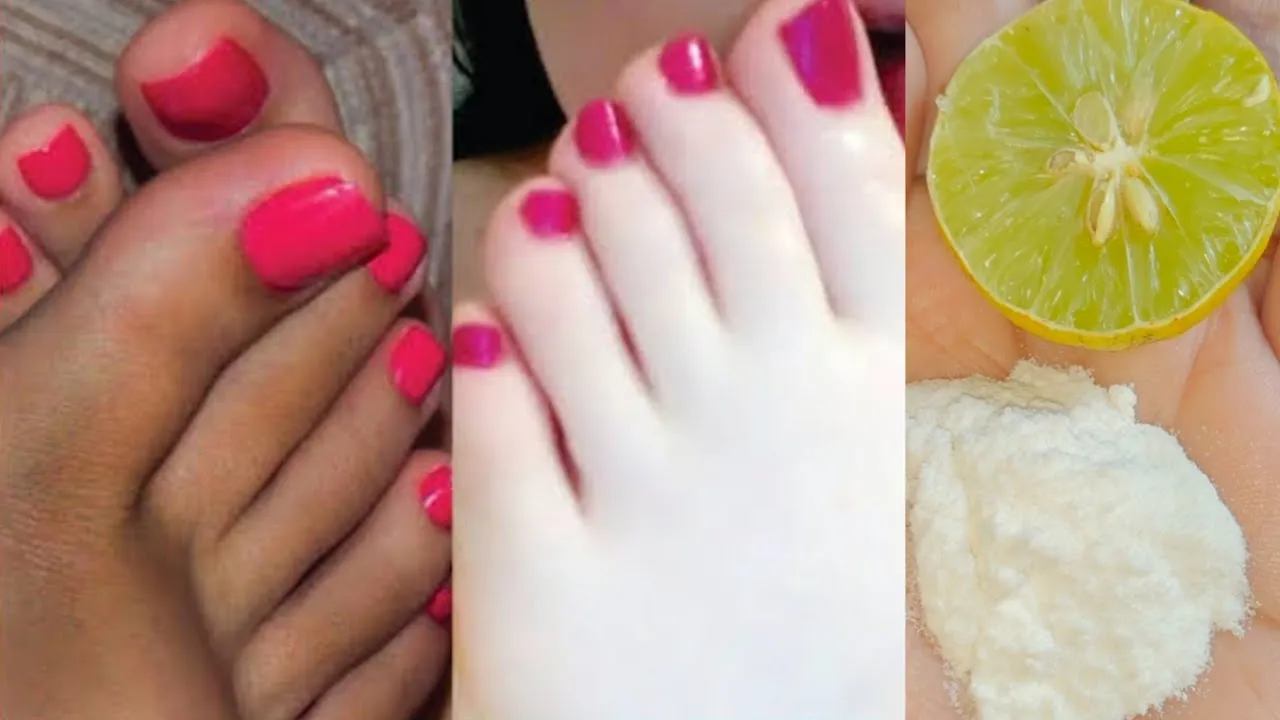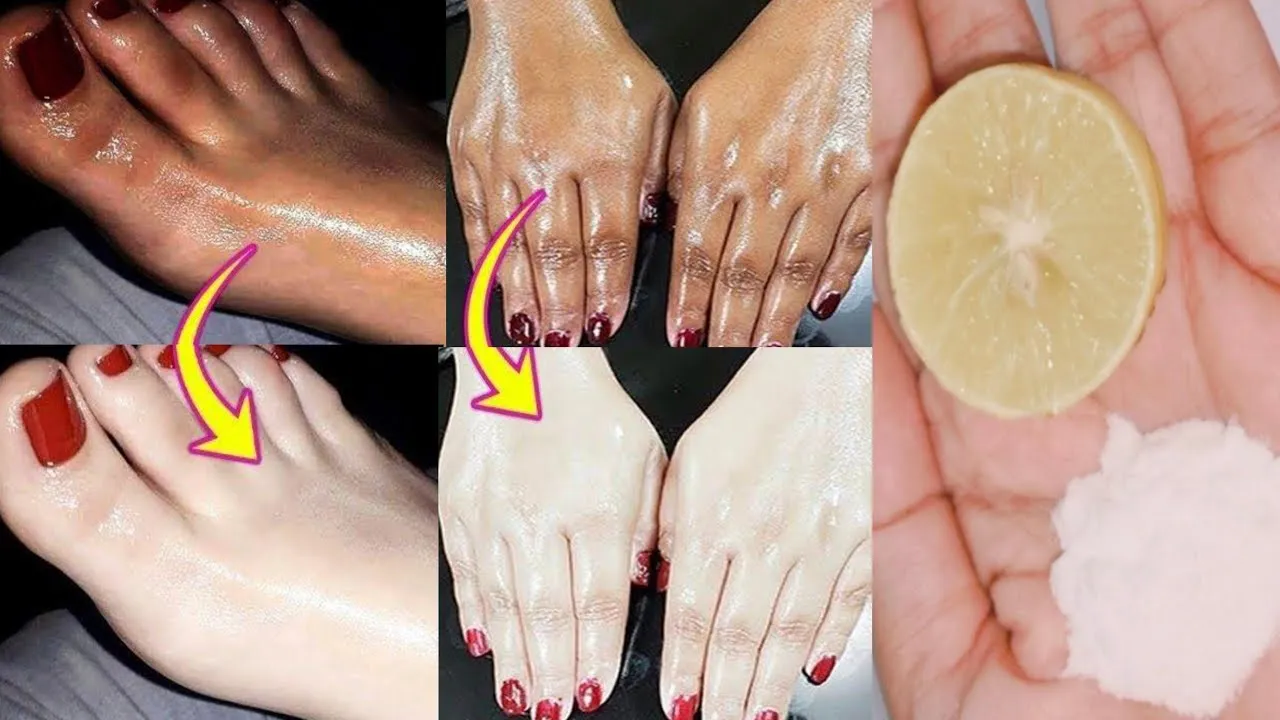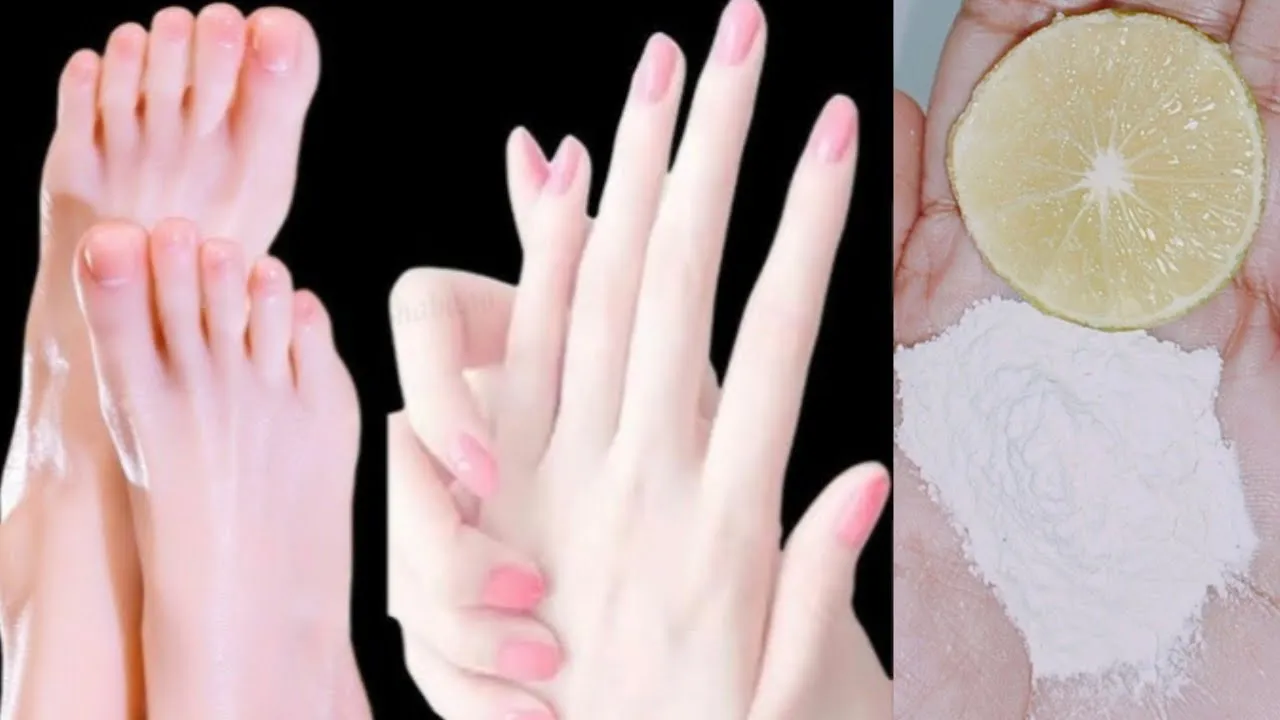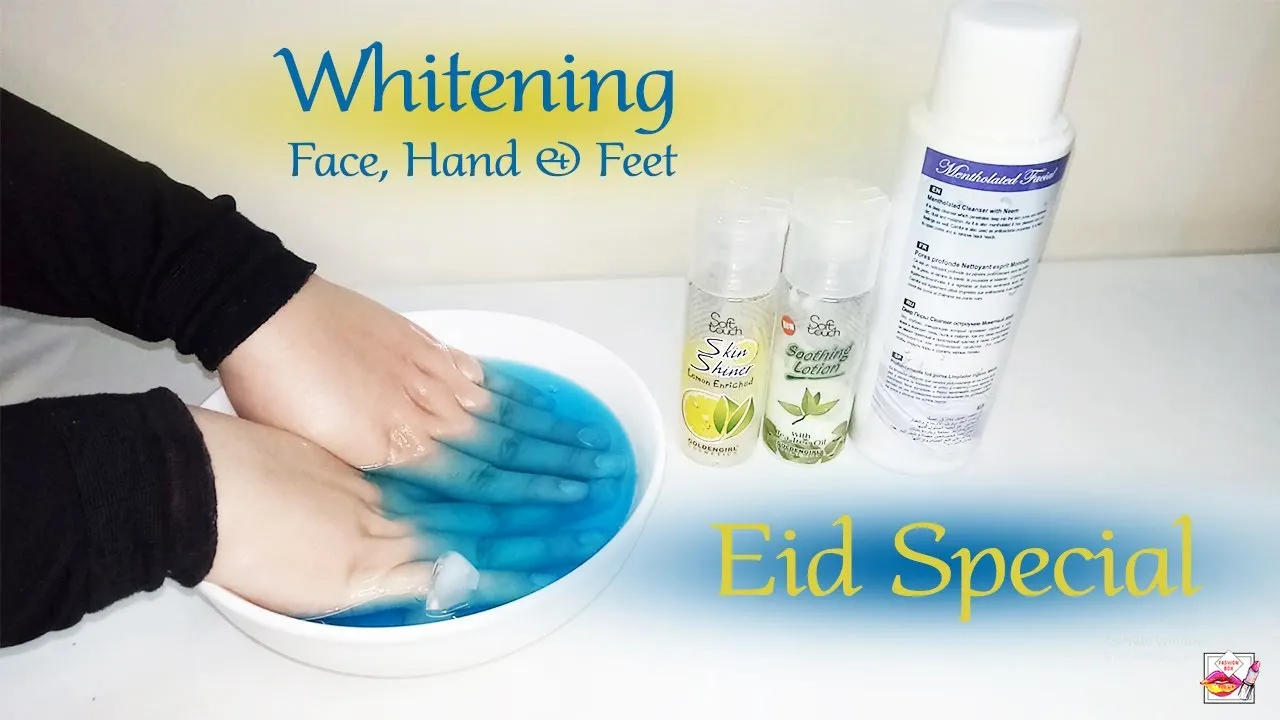Understanding Hand and Feet Skin
The skin on our hands and feet endures a lot of daily wear and tear, making it prone to various issues like dryness, discoloration, and uneven skin tone. Unlike other areas of the body, the skin on hands and feet is often exposed to environmental stressors such as sunlight, harsh chemicals, and frequent washing. Understanding the unique characteristics of this skin is crucial for developing an effective whitening routine. The epidermis, the outermost layer of the skin, contains melanocytes, cells responsible for producing melanin, the pigment that gives skin its color. The thickness of the skin on hands and feet also differs from other parts of the body, with the soles of the feet being particularly thick to provide protection. This understanding allows us to tailor treatments to penetrate the skin effectively and address specific concerns.
The Causes of Dark Hands and Feet
Several factors can contribute to the darkening of the skin on your hands and feet. These include genetics, which play a significant role in determining your natural skin tone and the likelihood of developing hyperpigmentation. Hormonal changes, such as those during pregnancy or menopause, can also trigger an increase in melanin production, leading to darker patches. Additionally, frequent sun exposure is a major culprit, as the sun’s UV rays stimulate melanin production to protect the skin, resulting in tanning and potential dark spots. Certain medical conditions, such as eczema or psoriasis, can cause inflammation and subsequent discoloration. Furthermore, the use of harsh chemicals in soaps, detergents, and cleaning products can irritate the skin, leading to dryness, damage, and darkening. Understanding these causes is the first step in finding the right solution for your skin.
Hyperpigmentation

Hyperpigmentation is a common skin condition that results in patches of skin becoming darker than the surrounding areas. This can be caused by an excess of melanin, the pigment responsible for skin color. In the context of hands and feet, hyperpigmentation often manifests as dark spots, uneven skin tone, or overall darkening. There are various types of hyperpigmentation, including sunspots (also known as age spots or solar lentigines), post-inflammatory hyperpigmentation (PIH), and melasma. Sunspots are typically caused by prolonged sun exposure, while PIH can result from skin injuries, acne, or inflammation. Melasma is often linked to hormonal changes. Recognizing the specific type of hyperpigmentation you have is important for choosing the most effective home remedies. For example, sunspots may respond well to exfoliating treatments and ingredients that inhibit melanin production, while PIH might require gentle care to avoid further inflammation.
Sun Exposure and Its Effects
Sun exposure is a significant factor in the darkening of hands and feet. The sun’s ultraviolet (UV) radiation stimulates melanocytes in the skin to produce more melanin, leading to tanning. While tanning is often seen as desirable, excessive sun exposure can lead to hyperpigmentation and premature aging of the skin. The hands and feet are particularly vulnerable to sun damage because they are frequently exposed to the sun, often without adequate protection. The prolonged exposure to UV rays can cause the skin to become dry, leathery, and develop dark spots or uneven skin tone. It is essential to protect your hands and feet from the sun to maintain a lighter, more even complexion. This can be achieved through the use of sunscreen, protective clothing, and seeking shade during peak sun hours. Regular sun protection can also prevent further damage and help in achieving the desired whitening results.
Effective Home Remedies for Hand Whitening
Achieving radiant hands doesn’t always require expensive treatments. Several effective home remedies utilize natural ingredients to lighten and brighten skin. These remedies often work by exfoliating the skin, reducing melanin production, and providing essential hydration. Consistency is key when using home remedies; results may take time and require regular application. It’s also important to perform a patch test before applying any new treatment to a larger area of skin to check for allergic reactions or sensitivities. Common ingredients like lemon juice, yogurt, honey, and turmeric are known for their skin-brightening properties. In addition to these ingredients, regular exfoliation and moisturizing are essential for maintaining healthy, lighter-looking skin. Combining these home remedies with a consistent skincare routine can significantly improve the appearance of your hands.
Lemon Juice for Brightening

Lemon juice is a natural bleaching agent due to its high citric acid content. This acid helps to exfoliate the skin, removing dead skin cells and promoting skin renewal. The Vitamin C present in lemon juice also has antioxidant properties that can help reduce melanin production, thereby lightening the skin. To use lemon juice, simply apply freshly squeezed juice to your hands and feet. Allow it to sit for 15-20 minutes before rinsing with cool water. Be cautious, as lemon juice can make your skin more sensitive to the sun. It is recommended to use this treatment at night and apply sunscreen during the day. For sensitive skin, dilute the lemon juice with water or honey to reduce the risk of irritation. Consistent use of lemon juice can help brighten the skin over time, revealing a more radiant complexion.
Yogurt and Honey Mask
A yogurt and honey mask offers a dual approach to hand whitening, combining the exfoliating properties of yogurt with the moisturizing and antibacterial benefits of honey. Yogurt contains lactic acid, a gentle exfoliant that helps remove dead skin cells and promote skin cell turnover. Honey is a natural humectant, drawing moisture to the skin and keeping it hydrated, which is crucial for maintaining a healthy complexion. To create this mask, mix plain yogurt with a teaspoon of honey. Apply the mixture to your hands and feet, and let it sit for 15-20 minutes. Rinse with lukewarm water. Regular use of this mask helps to brighten the skin, reduce dark spots, and improve overall skin texture. The combination of lactic acid and honey provides both exfoliation and hydration, making it an effective home remedy.
Turmeric Paste for Skin
Turmeric, a spice known for its anti-inflammatory and antioxidant properties, has been used for centuries in skincare, including skin whitening. Curcumin, the active compound in turmeric, helps to reduce melanin production and lighten the skin. To make a turmeric paste, mix turmeric powder with water or milk to form a thick paste. Apply this paste to your hands and feet, and let it sit for about 15-20 minutes. Rinse with water. You can also add other ingredients like honey or yogurt to enhance the benefits. Be aware that turmeric can temporarily stain the skin yellow, but this effect fades with washing. Regular use of turmeric paste can help reduce dark spots, even out skin tone, and give your hands and feet a brighter appearance. Always use a small amount first to test for skin sensitivity.
Exfoliation Techniques for Hands and Feet

Exfoliation is a critical step in any hand and feet whitening routine, as it helps remove dead skin cells and promotes skin cell turnover. This process reveals the fresh, brighter skin underneath and allows skincare products to penetrate more effectively. There are various exfoliation techniques, including using physical exfoliants like scrubs and chemical exfoliants like AHAs or BHAs. Regular exfoliation helps to even out skin tone, reduce the appearance of dark spots, and improve skin texture. The frequency of exfoliation depends on your skin type; typically, exfoliating once or twice a week is sufficient. Over-exfoliating can lead to dryness, irritation, and sensitivity. It’s essential to choose exfoliants that are appropriate for the delicate skin of your hands and feet and follow up with moisturizing to keep the skin hydrated and healthy.
Gentle Exfoliants
Gentle exfoliants are ideal for the sensitive skin of hands and feet. They help remove dead skin cells without causing irritation or damage. Options include sugar scrubs, oatmeal scrubs, or gentle chemical exfoliants like lactic acid. Sugar scrubs are made by mixing sugar with a carrier oil, such as olive oil or coconut oil. The sugar granules gently buff away dead skin cells, while the oil moisturizes the skin. Oatmeal scrubs offer soothing and anti-inflammatory benefits; finely ground oatmeal can be mixed with water or honey to create a gentle exfoliating paste. Lactic acid, a type of AHA, provides a gentle chemical exfoliation that is suitable for sensitive skin. These gentle exfoliants can be used once or twice a week, followed by thorough rinsing and moisturizing.
DIY Sugar Scrub
Creating a DIY sugar scrub is simple and effective for exfoliating hands and feet. You can customize it with ingredients that suit your skin type and preferences. The base for a sugar scrub is typically granulated sugar, which provides the physical exfoliation. Combine sugar with a carrier oil, such as olive oil, coconut oil, or almond oil, to moisturize the skin. You can also add essential oils for fragrance and additional benefits, such as tea tree oil for its antibacterial properties or lavender oil for its calming effects. To make the scrub, mix equal parts sugar and oil, then add a few drops of essential oil if desired. Gently massage the scrub onto your hands and feet in circular motions for a few minutes, then rinse with warm water. Using a sugar scrub once or twice a week helps to keep your skin smooth, bright, and hydrated.
Moisturizing Hands and Feet

Moisturizing is an essential step in hand and feet whitening, as it helps to keep the skin hydrated, supple, and healthy. Dry skin can appear dull and can exacerbate the appearance of dark spots and uneven skin tone. Regular moisturizing helps to maintain the skin’s natural barrier function, preventing moisture loss and protecting against environmental stressors. Choose a moisturizer that suits your skin type; for example, those with dry skin might benefit from thick creams or balms, while those with oily skin might prefer lightweight lotions. Apply moisturizer after washing your hands and feet, especially after exfoliating or bathing, to lock in moisture. Consistent moisturizing can make a significant difference in the appearance of your skin, helping to achieve a brighter and more even complexion.
Importance of Hydration
Adequate hydration is crucial for healthy skin, impacting its elasticity, appearance, and overall function. When your body is well-hydrated, your skin is more capable of retaining moisture, appearing plump, and radiant. Dehydration can lead to dry, flaky skin, making the appearance of dark spots and uneven skin tone more pronounced. Drinking sufficient water throughout the day helps to flush out toxins and support the skin’s natural processes. In addition to drinking water, using hydrating skincare products, such as moisturizers containing hyaluronic acid or glycerin, can help to draw moisture into the skin. Regularly moisturizing your hands and feet helps to maintain the skin’s hydration levels, preventing dryness and promoting a brighter, healthier complexion. Ensuring your body is well-hydrated both internally and externally will significantly improve the skin’s appearance and effectiveness of your whitening efforts.
Natural Oils for Softening Skin
Natural oils provide excellent moisturizing and softening benefits for hands and feet, helping to improve their appearance and texture. These oils are rich in essential fatty acids, vitamins, and antioxidants, which nourish the skin and protect it from environmental damage. Coconut oil is a popular choice due to its moisturizing and antibacterial properties. Olive oil is another excellent option, offering deep hydration and antioxidant protection. Almond oil is lightweight and easily absorbed, making it ideal for everyday use. Argan oil is rich in vitamin E and fatty acids, which help to improve skin elasticity and reduce the appearance of dark spots. Applying natural oils to your hands and feet regularly, especially after bathing or exfoliating, can help soften the skin, improve its elasticity, and promote a more radiant complexion. Massaging the oils into the skin improves circulation, further enhancing their benefits.
Maintaining Hand and Feet Radiance

Maintaining the radiance of your hands and feet requires a consistent skincare routine and proactive measures to protect your skin. This includes regular exfoliation to remove dead skin cells, moisturizing to keep the skin hydrated, and protecting against environmental stressors like sun exposure. Making these practices a regular part of your daily or weekly routine will help to ensure that your hands and feet remain smooth, bright, and healthy. It’s also important to be mindful of the products you use, opting for gentle, non-irritating formulations. Consistency and patience are key; visible improvements may take time, so sticking to your skincare routine is crucial for long-term results. Incorporating these maintenance tips into your lifestyle will allow you to enjoy the benefits of brighter, more radiant hands and feet.
Sun Protection Tips
Protecting your hands and feet from the sun is paramount to maintaining a bright and even skin tone. Sun exposure is a primary contributor to dark spots and hyperpigmentation, so regular sun protection is vital. Always apply a broad-spectrum sunscreen with an SPF of 30 or higher to your hands and feet at least 15 minutes before sun exposure. Reapply sunscreen every two hours, or more frequently if you are swimming or sweating. In addition to sunscreen, consider wearing protective clothing, such as long sleeves and gloves, when outdoors. Seek shade during peak sun hours, typically between 10 a.m. and 4 p.m. Regular sun protection not only prevents the formation of new dark spots but also helps maintain the results of your hand and feet whitening treatments. This simple practice is essential for long-term skin health.
Regular Skincare Routine
A consistent skincare routine is the cornerstone of maintaining radiant hands and feet. This routine should include regular cleansing, exfoliating, moisturizing, and sun protection. Begin with a gentle cleanser to remove dirt and impurities without stripping the skin of its natural oils. Exfoliate once or twice a week to remove dead skin cells, revealing brighter skin. Apply a moisturizer daily to keep the skin hydrated and supple. Protect your hands and feet from the sun by applying sunscreen daily and wearing protective clothing. Incorporate hand and feet whitening remedies, such as lemon juice or turmeric paste, into your routine a few times a week. Consistent application of this routine ensures that your skin remains healthy, bright, and free from dark spots and discoloration. Making skincare a habit leads to long-term results.
